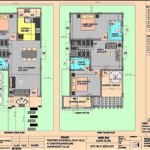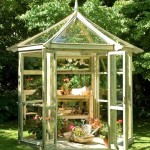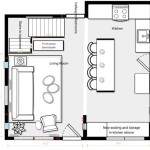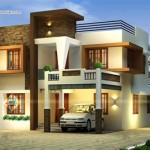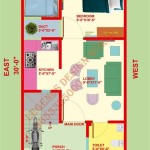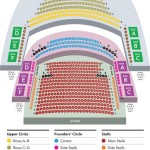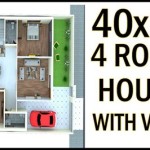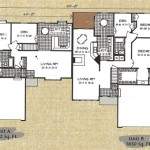Floor Plans for 720 Sq Ft House: Maximizing Space and Functionality
Designing a 720 sq ft house presents a unique challenge and opportunity. It demands careful planning and consideration of space utilization to ensure comfort, functionality, and aesthetic appeal. While seemingly compact, a well-designed 720 sq ft home can offer a surprisingly comfortable and efficient living environment. Successful floor plans for this size prioritize open layouts, multi-functional spaces, and clever storage solutions. Understanding the common design strategies and various floor plan options available is crucial for maximizing the potential of a 720 sq ft property.
The primary goal of any 720 sq ft house design is to make the space feel larger and more livable than its physical dimensions might suggest. This often involves minimizing walls, strategically placing windows for natural light, and selecting furniture that serves multiple purposes. Thorough consideration of traffic flow and the intended use of each area contributes significantly to the overall success of the design. Understanding building codes and local regulations regarding minimum room sizes and egress requirements is also paramount before finalizing any floor plan.
Key Considerations Before Designing Your 720 Sq Ft Home
Before embarking on the design process, several critical factors must be considered. These include the lifestyle of the occupants, the climate of the region, and any specific needs or preferences. These factors will inform the design choices and ultimately determine the optimal floor plan for the 720 sq ft house.
Firstly, consider the lifestyle of the intended occupants. Is the home for a single person, a couple, or a small family? This will significantly impact the number of bedrooms and bathrooms required, as well as the size and configuration of the living and dining areas. A single person might prioritize a larger home office or hobby space, while a couple might prefer a more spacious kitchen and living area. A family with children will need to consider play areas and adequate storage for toys and other belongings.
Secondly, the local climate will influence the design choices. In colder climates, insulation and efficient heating systems are essential. Window placement should be optimized to maximize solar gain during the winter months. In warmer climates, ventilation and shading are crucial for maintaining a comfortable indoor temperature. Consider the orientation of the house on the site to minimize exposure to the harsh afternoon sun. Using passive solar design principles can significantly reduce energy consumption and improve the overall comfort of the home.
Thirdly, consider any specific needs or preferences of the occupants. This might include accessibility requirements for individuals with disabilities, the need for a dedicated home office, or a preference for open-concept living. Incorporating these specific needs into the initial design will ensure that the finished home is both functional and comfortable for its occupants. Ignoring these needs early on can lead to costly and time-consuming modifications later in the construction process.
Finally, think about the future. Will the occupants' needs change over time? Designing for flexibility can extend the lifespan and usability of the home. This might involve incorporating adaptable spaces that can be easily reconfigured to meet changing needs, such as a guest room that can be converted into a home office or a playroom that can become a bedroom.
Common Floor Plan Layouts for 720 Sq Ft Houses
Several common floor plan layouts are well-suited for 720 sq ft houses. Each layout offers a different balance of space and functionality, and the best choice will depend on the specific needs and preferences of the occupants.
One popular option is the open-concept layout. This design typically combines the living room, dining area, and kitchen into a single, flowing space. This creates a sense of spaciousness and facilitates social interaction. Open-concept layouts are particularly well-suited for single individuals or couples who enjoy entertaining. The absence of walls allows for greater flexibility in furniture arrangement and creates a more visually appealing environment. However, open-concept layouts can be challenging to heat and cool efficiently, and they may not provide enough privacy for some occupants. Good ventilation and carefully considered zoning for heating and cooling systems can mitigate these challenges.
Another common layout is the one-bedroom apartment-style design. This layout typically features a separate bedroom, bathroom, kitchen, and living area. This provides more privacy than an open-concept layout and is well-suited for individuals or couples who value separate living spaces. The bedroom can be positioned at the rear of the house to offer a quiet retreat from the main living areas. A well-designed one-bedroom layout can feel surprisingly spacious, especially if it incorporates large windows and smart storage solutions.
A two-bedroom layout is also possible within 720 sq ft, although it requires careful planning and optimization of space. This layout is typically used for small families or individuals who need a guest room or home office. The bedrooms will necessarily be smaller than in a one-bedroom layout, but with clever design, they can still be comfortable and functional. Utilizing vertical space with built-in shelving and storage solutions is crucial in a two-bedroom 720 sq ft house. The living area might be slightly smaller than in other layouts, but it can still be a comfortable and inviting space with careful furniture selection and arrangement.
A studio apartment-style layout is another possibility, especially for minimalist living. This design combines all living functions into a single room, with the exception of the bathroom. The kitchen is typically integrated into the living space. This layout is best suited for single individuals who value simplicity and efficiency. Creating distinct zones within the studio apartment is important to visually separate different activities, such as sleeping, eating, and working. Using screens, curtains, or furniture to create these zones can enhance the functionality and comfort of the studio apartment.
Design Strategies for Maximizing Space in a 720 Sq Ft House
Regardless of the chosen layout, several design strategies can be employed to maximize space and functionality in a 720 sq ft house. These strategies focus on creating the illusion of spaciousness, utilizing vertical space, and incorporating multi-functional furniture.
One key strategy is to utilize vertical space. Tall ceilings can make a small space feel larger and more airy. Consider incorporating built-in shelving and cabinets that extend to the ceiling to maximize storage space. Loft spaces can also be used to create additional living areas or storage. Wall-mounted shelves and cabinets are also excellent for maximizing vertical space and keeping the floor clutter-free. This maximizes the walkable area creating a greater sense of spaciousness.
Another important strategy is to choose multi-functional furniture. A sofa bed can serve as both a seating area and a guest bed. A dining table that can be folded away when not in use can save valuable floor space. Ottomans with built-in storage can provide extra seating and storage. Selecting furniture that serves multiple purposes is essential for maximizing space in a small home. Consider furniture that can be easily moved or reconfigured to adapt to different needs. For example, a coffee table with wheels can be easily moved out of the way when needed, creating more space for activities.
Creating the illusion of spaciousness is another crucial strategy. Light colors can make a room feel larger and brighter. Large windows can bring in natural light and create a connection to the outdoors. Mirrors can also be used to reflect light and create the illusion of more space. Minimizing clutter is also important for creating a sense of spaciousness. Keeping surfaces clear and organized can make a small home feel more open and inviting. Using storage solutions to conceal clutter is essential. Utilizing natural light maximizes the space's openness. Avoid too much clutter. Keep the colour scheme light and airy to open up the space.
In summary, designing a 720 sq ft house requires careful planning and consideration of space utilization. By considering the lifestyle of the occupants, the local climate, and any specific needs or preferences, designers can create floor plans that are both functional and comfortable. Utilizing common design strategies such as open layouts, multi-functional spaces, and clever storage solutions can maximize the potential of a 720 sq ft property and create a livable and enjoyable home.

Farmhouse Style House Plan 0 Beds 5 Baths 720 Sq Ft 124 1330 Houseplans Com

House Plan 45394 Country Style With 720 Sq Ft 2 Bed 1 Bath

36x20 House 2 Bedroom Bath 720 Sq Ft Floor Plan Model 1e
720 Sq Ft Small Contemporary House Plan 1 Bedroom Bath

House Plan 85944 Cabin Style With 720 Sq Ft 1 Bed Bath

720 Sqft House Plan With 3d Elevation Ii 24 X 30 Ghar Ka Naksha Home Design

Tuff Shed Small House Cimarron 720 Sq Ft Cabin Project

720 Square Feet 2 Bedroom Low Budget Small House And Plan Home 20

20x36 House Plan 720 Sqft 3 Bhk Design 2 Y

14 Modern Cottage House Plans Craft Mart

